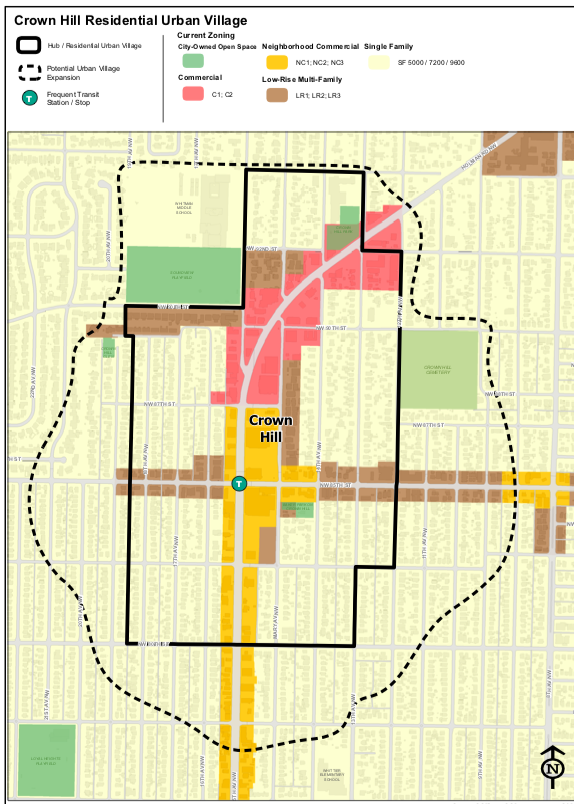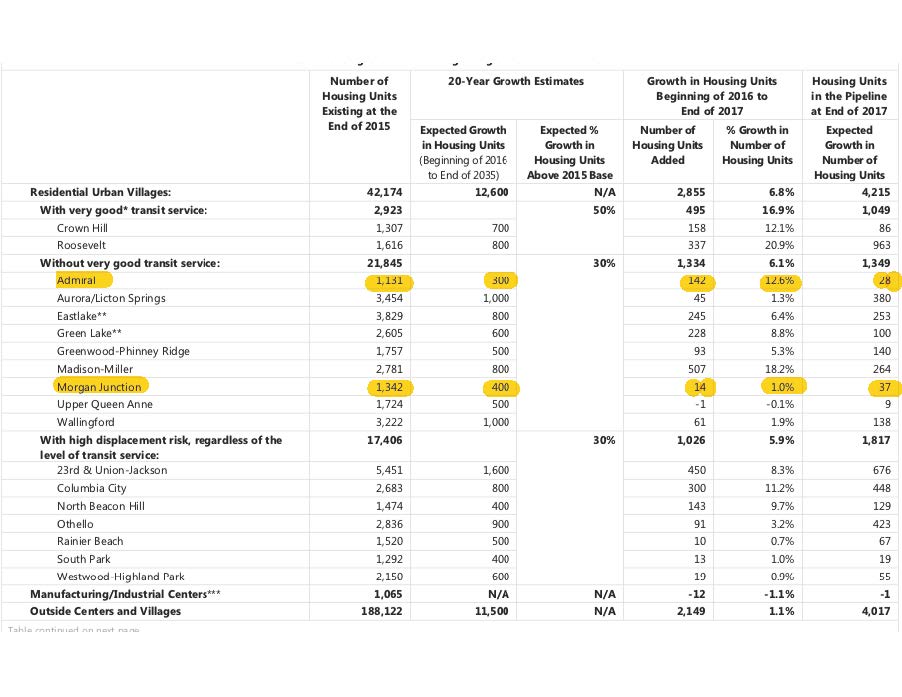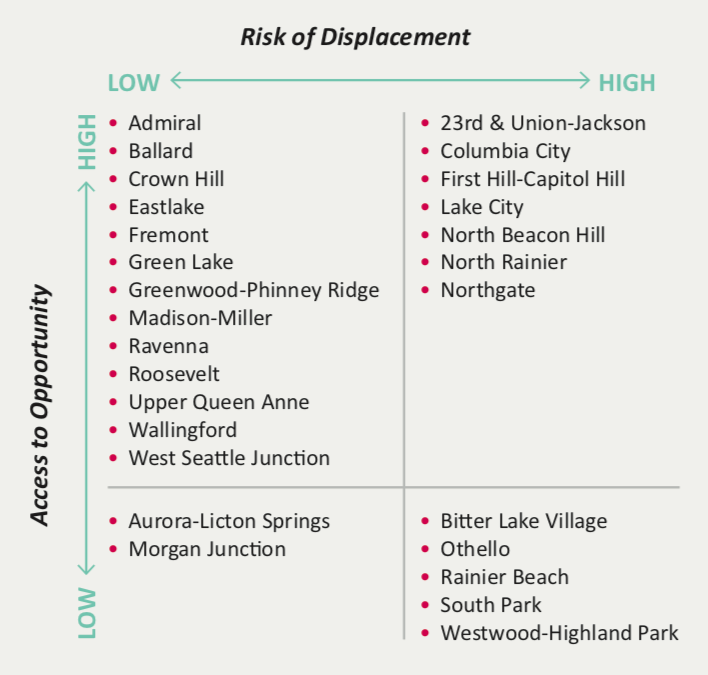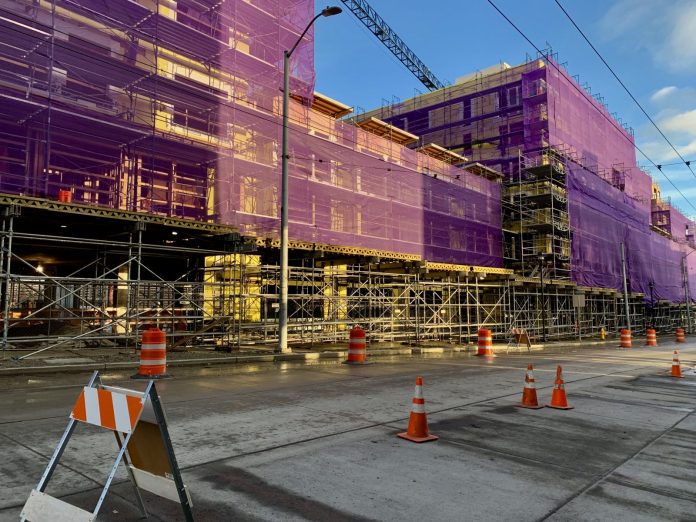As the City Council debates Mandatory Housing Affordability (MHA) amendments in the lead up to next Thursday’s big public hearing on MHA, the Seattle Planning Commission (SPC), an appointed board that advises on broad planning goals, policies, and plans, is currently advocating for two proposed amendments to the City Comprehensive Plan that would ensure full implementation of MHA.
The first amendment would expand the boundaries for ten urban villages to provide more housing options near frequent transit nodes, while the second amendment would revise neighborhood plan policies that seek to retain single-family zoning in urban villages.
In a draft letter to Councilmember Rob Johnson, the SPC wrote, “The amendments ensure consistency with citywide policies and support the implementation of MHA, which is a critical step in addressing housing affordability.”
Last November, the SPC emerged as advocates for increasing affordability and homeownership through “flexible zoning that promotes diverse neighborhoods” with their publication Neighborhoods For All.
SPC is continuing that work through their stewardship of the Comprehensive Plan, specifically in how it can support the goal of MHA to create 6,000 affordable homes.
“We are trying to have more options for people in urban villages,” said Grace Kim, Seattle Planning Commission member. “Single-family home owners are benefitting from access to amenities and resources. This privilege needs to be shared as our city continues to grow.”

Expanding Urban Village Boundaries
In their draft letter, the SPC explained that boundaries should be expanded to include a ten-minute walkshed to frequent transit nodes, defined as light rail or the intersection of two frequent bus lines. In 2018, the Office of Planning and Community Development (OPCD) proposed expanded boundaries of ten urban centers and villages. As transit coverage increases throughout Seattle, urban village boundaries are expected to increase.
In 2019, the SPC’s proposed urban village boundary expansions include: 23rd & Union/Jackson, Ballard, Columbia City, Crown Hill, North Beacon Hill, North Rainier, Othello, Rainier Beach, Roosevelt, and West Seattle Junction.
They also note that the Aurora-Licton Springs urban village is not currently included in the list, but “now has frequent transit service provided by the RapidRide E Line and should therefore be subject to full implementation of MHA.”
Full implementation of MHA would mean rezoning single-family areas contained within the proposed urban center and village expansions to increase the development capacity with the stated intent of promoting housing flexibility and affordability, common themes promoted by the SPC.
Revising Neighborhood Plans
Problems have emerged between neighborhood plans and MHA implementation. Several neighborhood plans contain policies that “promote retention of single-family home zoning in urban villages.” The SPC amendment recommends that these neighborhood plans be revised so that they are consistent with MHA guidelines.
Impacted neighborhoods include: Aurora-Licton, Fremont, Morgan Junction, North Rainier, Northgate, Roosevelt, Wallingford, West Seattle Junction, and Westwood/Highland Park.
According to the SPC, eight of the neighborhoods have proposed to replace language that supports protecting single-family zones with “new language about maintaining the physical character of historically lower-density areas of the urban village and encouraging housing choices such as cottages, townhouses, and low-rise apartments.”
The SPC supports these neighborhood initiated amendments and believes they are an improvement over previous policies.
However, an amendment calling for a “trigger” to induce new neighborhood planning proposed by Morgan Junction in Southwest Seattle, has not been not supported by the SPC.
Councilmember Lisa Herbold represents Morgan Junction and has proposed land-use amendment, MJ-P23.1, which states:
“Use community engagement and neighborhood planning tools to identify solutions for land use and housing affordability issues when more than 25 percent of the urban village could be affected by proposed changes.”
The SPC has problems with the 25% “trigger” for a few reasons:
- Comprehensive plans should reflect parity among neighborhoods, thus Morgan Junction’s request to adopt much more specific policy language is inequitable.
- Neighborhood plans should not include policy language that requires the City to focus on their specific neighborhood.
- The City is strapped for funding for neighborhood planning. Other neighborhoods might be in greater need of planning than Morgan Junction.
Representatives of MoCA, the Morgan Community Association, came out to speak against the SPC’s decision, arguing that MHA implementation would bring “extraordinary growth” to their urban village that was not expected or accounted for in their current neighborhood plan.

MoCA is one of the 26 neighborhoods that form SCALE, a group that has appealed the Environmental Impact Statement (EIS) of MHA and delayed MHA’s citywide implementation by at least a year.
In their appeal to the EIS, MoCA referenced the fact that more than 50% of the Morgan Junction Urban Village is currently zoned single-family. It also argued that MHA would bring “negative impacts” to the community.

Similar to other neighborhoods that appealed the EIS, Morgan Junction has tried to frame their argument around preservation of “affordable and entry level housing.”
At the heart of the issue is how density inside the UV [urban village] will be achieved and how the balance between the expected density of our UV and the character of the UV, which is currently more than 50% home ownership oriented, will be maintained.
MoCA, “Single Family areas inside the Morgan Urban Village, What’s the Plan?” 2017
The SPC’s rejection of Morgan Junction’s amendment will be sure to shake up more dialogue around the topic of neighborhood plans. Last November, Seattle City Council passed Councilmember Teresa Mosqueda’s legislation requiring that a Race and Equity Toolkit (RET) be completed before work gets started on the City’s next Comprehensive Plan. The goal of the RET is to determine how current zoning practices, including Seattle’s widespread single-family housing, has affected race and equity outcomes across the city.
The Seattle Planning Commission is currently seeking applications from volunteers interested in joining their appointed board. Two appointments will be made by the City Council and one is made by the Mayor.
Natalie Bicknell Argerious (she/her) is a reporter and podcast host at The Urbanist. She previously served as managing editor. A passionate urban explorer since childhood, she loves learning how to make cities more inclusive, vibrant, and environmentally resilient. You can often find her wandering around Seattle's Central District and Capitol Hill with her dogs and cat. Email her at natalie [at] theurbanist [dot] org.




